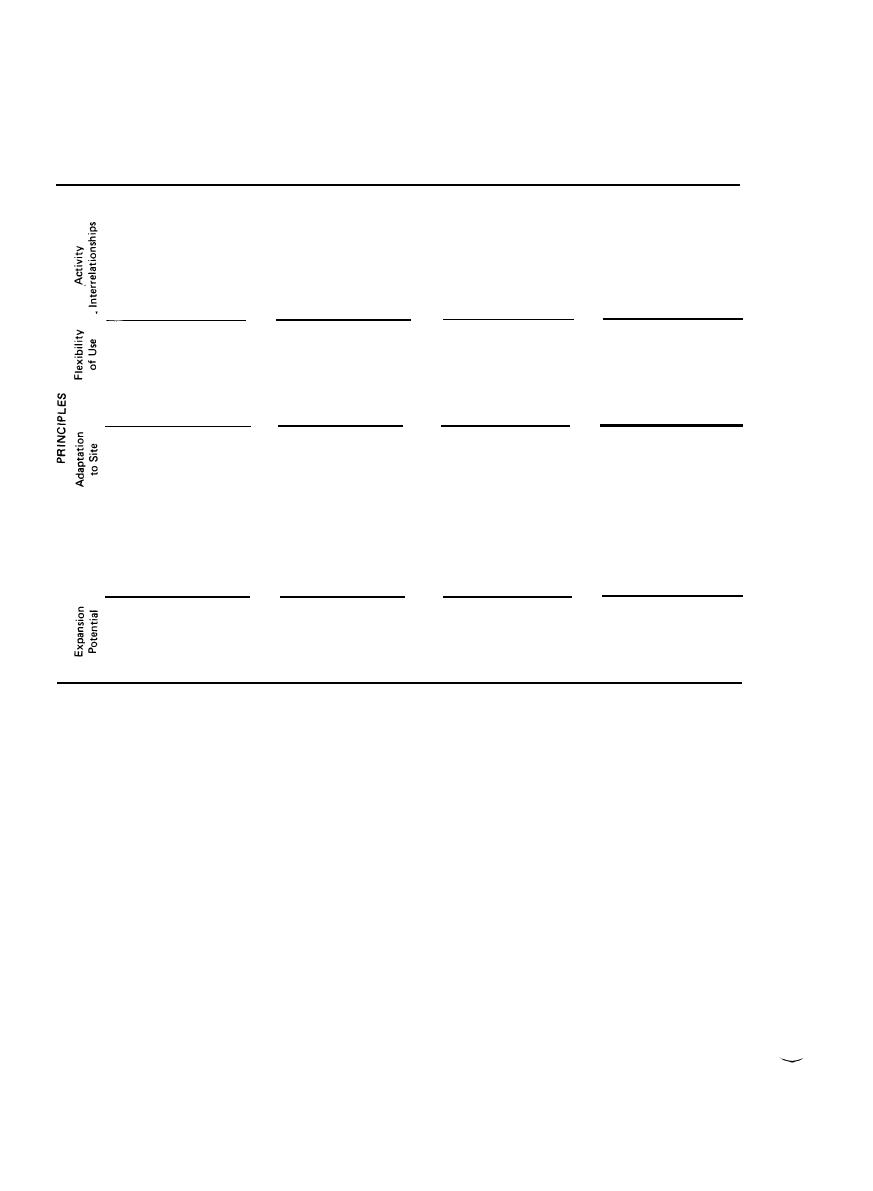
Design Guide: Recreation Centers Spatial Organization January 1976
Table 5-2. Spatial Organization Scheme Evaluation.
AXIAL SCHEME
LINEAR SCHEME
DISPERSED SCHEME
CENTRAL SCHEME
Separates areas with
Facilitates noise control
Sound control excellent
Separates conflicting
conflicting acoustical
activities
requirements well
Inhibits visual control
Visual/physical access
Facilitates visual control
Reduces visual/physical
facilitated
Works best with Centers of
access to all spaces
12,700 SF or less
More opportunities for
Locate popular activities
Maximum opportunity for
Spontaneous social
social interaction
at ends of axes to encourage
interaction hampered
social interaction because
movement past new activities
of visual and physical access
Highly flexible
Houses many diverse
activities well with
no dysfunctions
"Functions well in all
Can be focused outwardly
Focused inwardly
Similar to site adapta-
climates
tion for Central Scheme
Requires solar path
Suitable for severe
Adaptable to any site
orientation
climates
condition
Plan level changes
Suitable for temperate
climates
carefulIy for sloped
sites
Natural cooling results from
orientation to prevailing
winds
Expansion can occur at
Limited
Can be expanded at either end
Restrictive
ends of axes
5-6


 Previous Page
Previous Page
